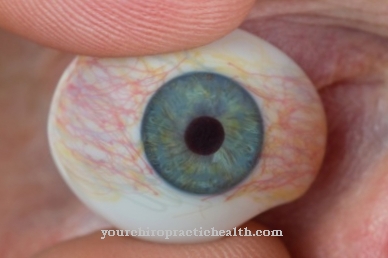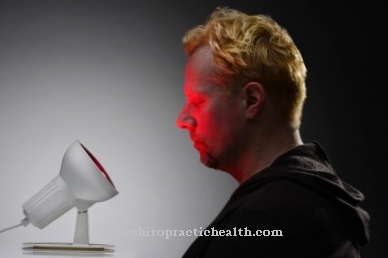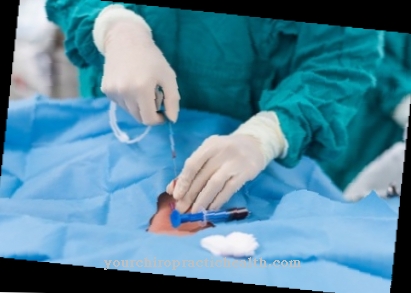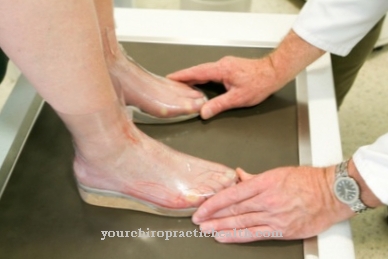Most patients are reluctant to go to the dentist, as the visit to the practice is often associated with pain and the unpleasant noise of the mechanical dental drill. In contrast, work Laser drill (Dental laser) quiet and do not cause any disturbing vibrations. The laser technology used in dentistry is more precise and often faster than the commonly used dental instruments. However, it is not suitable for all medical applications.
What is a laser drill?
The laser drill (dental laser) is a dental instrument that was originally only used for the treatment of root and periodontal disease. Technological optimizations have resulted in the device having a wide range of applications today.
One of the main areas of application of dental lasers is the treatment of caries: With the help of laser beams, so much energy is sent to the carious area that it is ultimately blown away. The bundled light beam can be aligned so precisely that no healthy tissue is destroyed.
In contrast to normal dental drills, the light does not touch the tooth surface. Therefore, there is no unpleasant feeling of warmth on the tooth. Vibrations are also not felt.
Dental lasers are often combined with diagnostic lasers. In this way, the removal of undamaged tooth substance can be avoided. Since the laser light can damage the eyes, the dentist and patient wear protective goggles during treatment.
Shapes, types & types
Since the laser drill allows precise machining, it can be used well for smaller defects on the tooth. Different lasers are used for different types of treatments. There are Erbium-YAG, Er, Cr: YSGG, Nd: YAG, gas (CO2), diodes and multi-wave length lasers.
Most dental treatments use CO2 lasers. They direct the bundled light through a glass fiber or an articulated mirror arm onto the area to be treated. This type of laser is suitable for all cutting guides. Since multi-wave length lasers work with two different wavelengths, their area of application is greater than that of the other types of laser. In addition, the individual laser types differ in terms of light wave frequency and wattage.
Dental lasers enable single pulse, percussion, trephination and spiral drilling. With single-pulse drilling, the laser beam is only briefly directed once to the relevant point and drills a conical hole with a maximum depth of 2 mm. With the help of the percussion hole, one and the same spot is shot several times with a pulse. Percussion holes leave deeper holes. During trephination, the laser pulse rotates and drills the deepest holes. The initial drilling breaks the tooth surface. The second hole expands the hole by creating 50 to 80% overlaps with the surrounding tooth enamel or tissue. Helical drilling enables the tooth enamel to be removed in a spiral.
Structure & functionality
The laser drill consists of an electronic control unit, a control unit on which the dentist sets the pulses and duration of the emission, and the laser head. The emitted laser light only has a single wavelength. The waves emitted are rectified. Depending on the wavelength of the laser drill type, there are different interactions with the tissue to be treated. If the bundled light hits the carious part of the tooth, the beam ionizes the damaged tooth substance and evaporates it without leaving any residue.
When blasting away, smaller audible explosions occur due to the pressure difference between the tooth environment and the point of impact on the tooth, which, however, are usually not perceived as disturbing by the patient. The laser light is absorbed by the water in the tooth, evaporates and blasts away tiny amounts of ionized tooth substance (plasma) in small pressure waves. Since the laser does not come into contact with the tooth, the patient does not feel any vibrations during the treatment.
However, the dental laser can only drill smaller holes. If the patient has major caries damage, the dentist must use the normal, mechanical dental drill.
You can find your medication here
➔ Toothache medicationMedical & health benefits
The laser treatment at the dentist offers the patient many advantages. With the laser drill, hard-to-reach areas can be treated precisely. Because of the shorter treatment time, the nerve fibers are also spared. The dental treatment is largely painless. Thanks to the precise work, healthy tissue or undamaged tooth substance is not unnecessarily removed.
When drilling, the carious area is disinfected with the aid of the laser. Ceramic or plastic fillings adapt well to drill holes made with a laser drill.
Since healthy enamel reflects laser light differently than sick enamel, the bundled light can also be used in dental diagnostics to find tiny, hidden caries.
In dental surgery, the dental laser is used to remove skin growths, expose dental implants and disinfect wounds. In the treatment of periodontal disease, it kills bacteria in tooth pockets. As part of a root canal treatment, the dentist sterilizes the root canal with the laser drill so that operations on the root tip are unnecessary.
The latest clinical studies have shown that the laser drill guarantees almost 100 percent freedom from bacteria and is therefore usually superior to conventional methods (depending on the quality of the dentist). Since the light beam separates the blood vessels during dental operations, closes them again almost at the same time and immediately disinfects the small wound, cuts with the dental laser are low in bleeding. Laser drills make smaller cuts. The scars are almost invisible later. Wounds from laser drill treatments heal faster. In addition, infections later occur less often.
Dental lasers also achieve good results when treating pain-sensitive teeth by closing the tubules on the sensitive tooth necks well. In the event of inflammation of the tissue near tooth implants (peri-implantitis), the laser drill kills the pathogens present there.

























.jpg)


